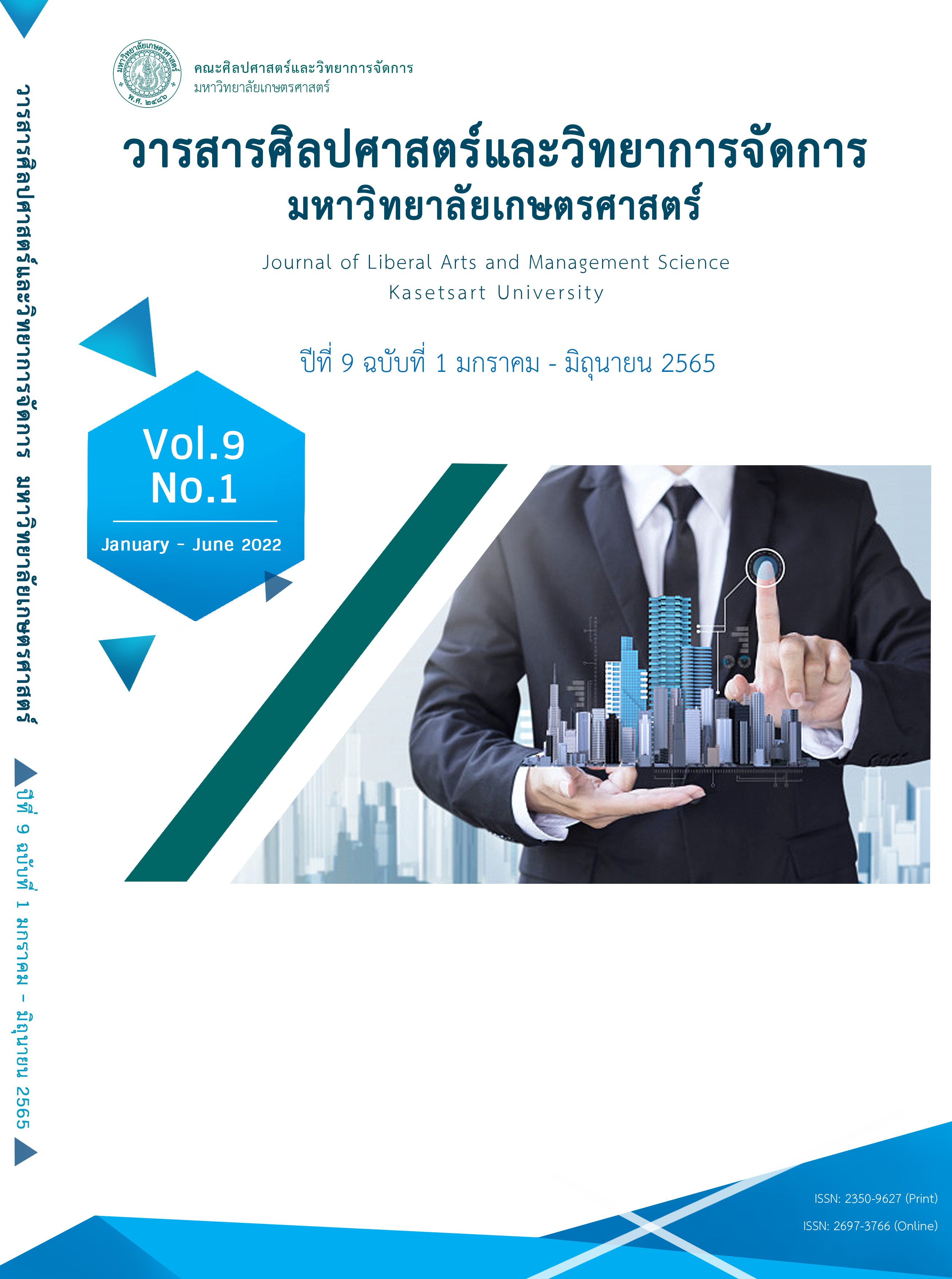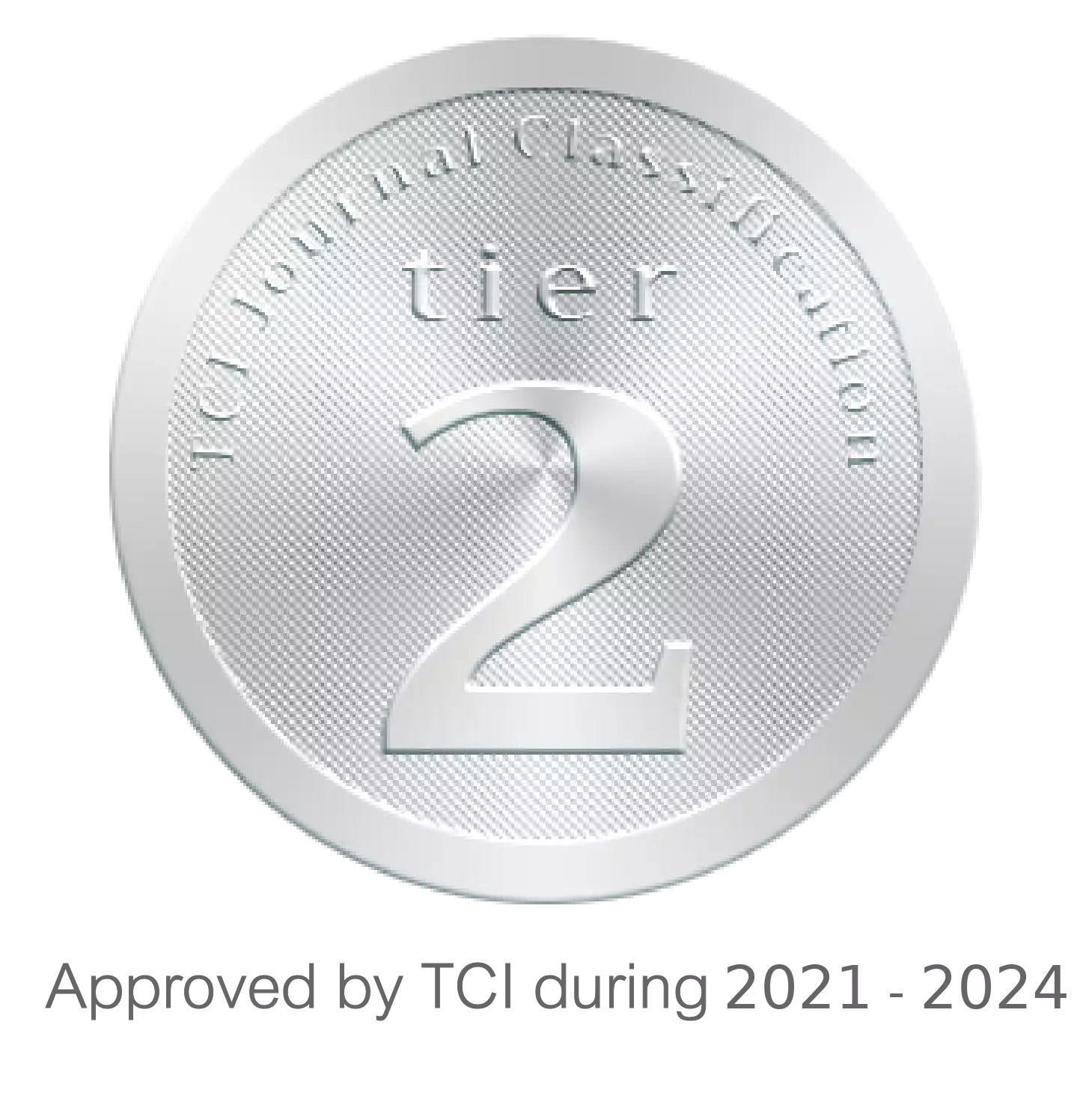EXERCISE PATTERNS IN ONLINE SOCIAL MEDIA AND THE ABILITY TO EXERCISE SELF-EXERTION OF THE ELDERLY
Keywords:
Elderly, Exercise Patterns, Online Social Media, Exercise Self-ExertionAbstract
The objectives of this research were to study exercise patterns of the elderly through online social media and the influence of exercise patterns through online media on the ability to exercise self-exertion of the elderly. The sample population consisted of 378 elderly people in school for the elderly in Muang District, Kalasin Province, by convenient random sampling. Data were collected using survey questionnaires and statistically analyzed using percentage, mean, standard deviation and the hypothesis were tested using a multiple regression analysis method. The research results revealed that the 60-64-year elderly students’ behavior in using online media for health strengthen was at a high level, the most used application was LINE. The most popular exercise patterns of the elderly through online social media on was exercise used to improve body balance, followed by exercise to improve muscle flexibility, exercise to improve muscle strength and reduced bone mass loss, and improve stability of cardiovascular system, descending sequences. In the case of non-congenital disease elderly would choose exercise to improve muscle strength and reduce bone mass loss most. As congenital disease elderly would exercise to improve body balance. Moreover, the research revealed that exercise patterns of the elderly through online social media in relation to the ability to exercise self-exertion of the elderly in a positive direction with a significance level of 0.05.
Downloads
References
กรมกิจการผู้สูงอายุ กระทรวงการพัฒนาสังคมและความมั่นคงของมนุษย์. (2562). มาตรการขับเคลื่อนระเบียบวาระแห่งชาติ เรื่องสังคมผู้สูงอายุ 64 Sustainable Change (ฉบับปรับปรุง). กรุงเทพฯ: บริษัท อมรินทร์พริ้นติ้งแอนด์พับลิชชิ่ง จำกัด (มหาชน).
จุฬาลักษณ์ ฟูรูโนะ. (2560). รูปแบบการออกกําลังกายสําหรับผู้สูงอายุในกรุงเทพมหานคร. สืบค้นเมื่อ 25 กรกฎาคม 2564, จาก chrome-extension://efaidnbmnnnibpcajpcglclefindmkaj /http://www.dsdw2016. dsdw.go.th/doc_pr/ndc_2559-2560/PDF/wpa_8085/ ALL.pdf
พนม คลี่ฉายา. (2563). ความผูกพัน ความเสี่ยงจากการใช้สื่อสังคมออนไลน์ และความรอบรู้ทางดิจิทัลและการรู้เท่าทันของประชาชน. วารสารนิเทศศาสตร์, 38(3), 1-16.
มูลนิธิสถาบันวิจัยและพัฒนาผู้สูงอายุไทย. (2561). สถานการณ์ผู้สูงอายุไทย พ.ศ. 2560. กรุงเทพฯ: มูลนิธิสถาบันวิจัยและพัฒนาผู้สูงอายุไทย.
สำนักงานพัฒนาธุรกรรมทางอิเล็กทรอนิกส์. (2562). รายงานผลการสำรวจพฤติกรรมผู้ใช้อินเทอร์เน็ตในประเทศไทย ปี 2561. กรุงเทพฯ: กระทรวงดิจิทัลเพื่อเศรษฐกิจและสังคม.
สำนักงานพัฒนาสังคมและความมั่นคงของมนุษย์จังหวัดกาฬสินธุ์. (2564). ศูนย์ข้อมูลทางสังคม 2564. สืบค้นเมื่อ 7 กันยายน 2564, จาก http://kalasin.m-society.go.th.
สำนักงานสถิติแห่งชาติ. (2560). ดัชนีพฤฒิพลังผู้สูงอายุไทย. กรุงเทพฯ: บริษัท เท็กซ์แอนด์เจอร์นัลพับลิเคชั่น จำกัด.
American College of Sports Medicine. (2010). ACSM’s resource manual for guidelines for exercise testing and prescription (6th ed.). Philadelphia: Lippincott William & Wilkins.
Blažič, A. J., & Blažič, B. J. (2018). Digital skills for elderly people: A learning experiment in four European countries. Review of European Studies, 10(4), 74-86.
Castilla, D. et al. (2018). Teaching digital literacy skills to the elderly using a social network with linear navigation: A case study in a rural area. International Journal of Human-Computer Studies, 118, 24-37.
Chantakeeree, C. (2016). Promoting exercise behavior for vulnerable elderly. The Journal of Faculty of Nursing Burapha University, 24(2), 1-13.
Eliopoulos, C. (2014). Gerontological nursing (8th ed.). Philadelphia: Lippincott William & Wilkins.
Hair, J. F., Black, W. C., Babin, B. J. & Anderson, R. E. (2010). Multivariate data analysis (7thed.). Upper Saddle River, NJ: Prentice Hall.
Khvorostianov, N. (2016). Thanks to the internet, we remain a family: ICT domestication by elderly immigrants and their families in Israel. Journal of Family Communication, 16(4), 355-368.
Kleechaya, P. (2021). Digital technology utilization of elderly and framework for promoting Thai active and productive aging. Journal of Communication Arts, 39(2), 56-78.
Lind, D.A., Marchal, W.G., & Wathen, S.A. (2010). Statistical techniques in business & economics (14th ed.). Boston, USA: McGraw-Hill & Irwin.
Marston, H. R. et al. (2016). Technology use, adoption and behavior in older adults: results from the iStoppFalls project. Educational Gerontology, 42(6), 371-387.
Miwa, M et al. (2017). Changing patterns of perceived ICT skill levels of elderly learners in a digital literacy training course. LIBRES: Library & Information Science Research Electronic Journal, 27(1), 13-25.
Nimrod, G. (2010). Seniors' online communities: a quantitative content analysis. The Gerontologist, 50(3), 382-392.
Nunnally, JC., & Bernstein I. (1994). Psychometric theory (3rd ed). New York: McGraw-Hill.
Quan-Haase, A., Mo, G. Y., & Wellman, B. (2017). Connected seniors: how older adults in East York exchange social support online and offline. Information, Communication & Society, 20(7), 967-983.
Svobodová, L., & Hedvičáková, M. (2017). The use of the social networks by elderly people in the Czech Republic and other countries V4. In Conference on e-Business, e-Services and e-Society (pp. 50-60). Springer, Cham.
Tipkanjanaraykha, K., Yingrengreung, S., Kheokao, J., Ubolwan, K., Jaemtim, N., & Promsuan, W. (2017). Health information seeking behaviors of elderly through online media Accordingto perceivedhealth status. Journal of Health science research, 11, 12-22.
Touht, T. A., & Jett, K. F. (2014). Gerontological nursing & healthy aging (4th ed.). Missouri: Mosby.
Tuntavanitch, P., & Jindasri, P. (2018). The real meaning of IOC. Journal of Educational Measurement Mahasarakham University, 24(2), 3-12.
Wojtek, J. (2014). ACSM’s exercise for older adult. China: Lippincott William & Wilkins.
Yamane, Taro. (1967). Statistics, an introductory analysis (2nd ed). New York: Harper and Row.









